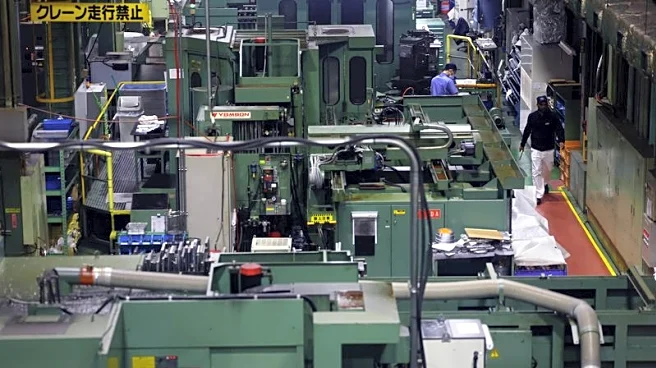What is the story about?
What's Happening?
The United States has agreed to permit South Korean workers to operate on equipment at U.S. investment sites using existing temporary visas, as announced by South Korea's foreign ministry. This decision follows a significant immigration raid at a Hyundai Motor car battery facility in Georgia, where numerous South Korean workers were detained. The U.S. has clarified that South Korean workers can utilize the ESTA visa waiver program and B-1 temporary visas for tasks such as equipment installation and servicing. Despite this, South Korea continues to seek broader access to U.S. visas for its specialized workers, a request that remains unresolved due to legislative constraints. A new visa section will be established at the U.S. embassy in Seoul to better coordinate these matters.
Why It's Important?
This development is crucial for maintaining and enhancing the trade and investment partnership between the U.S. and South Korea. South Korean companies, such as LG Energy Solution, have significant investments in the U.S., and the ability to send skilled workers is vital for the operation and expansion of these investments. The temporary visa solution provides a short-term fix, but the lack of a permanent resolution could hinder future investments and collaborations. The issue underscores the broader challenges within U.S. immigration policy, particularly concerning skilled foreign workers, which is a sensitive and complex topic in American politics.
What's Next?
Further meetings of the working group are anticipated to address these ongoing visa challenges. South Korea is likely to continue advocating for a new visa category or increased quotas for its skilled workers. The U.S. may face pressure to reform its visa policies to accommodate these demands, balancing economic interests with domestic immigration concerns. The outcome of these discussions could significantly impact the future of U.S.-South Korea economic relations and the operational strategies of South Korean companies in the U.S.
AI Generated Content
Do you find this article useful?















